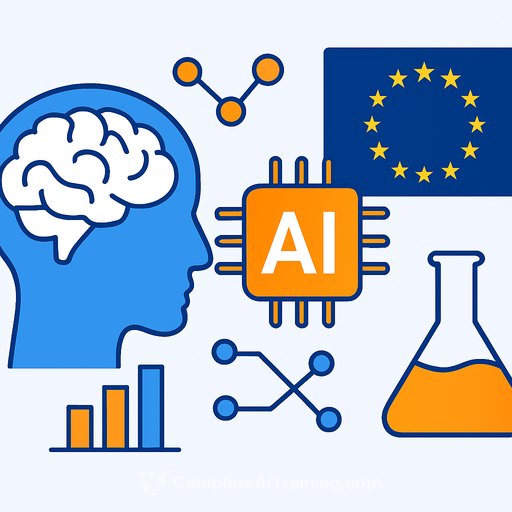Understanding Cookies Preferences
Cookies are small pieces of data stored on your device—whether a computer, mobile phone, or tablet—when you visit our websites. They help us recognize returning users and improve your browsing experience. Each cookie has an expiration period depending on its purpose.
In our Cookies Notice, "cookies" refers broadly to cookies and similar technologies like pixels, web beacons, and page tags. We use both first-party and third-party cookies. While third-party advertising cookies usually don't include personal information, they may be linked to such data later. Cookie data is generally encrypted and often aggregated to protect privacy.
We use cookies for different reasons. Here’s a quick overview of the types we deploy:
- Advertising Cookies: These cookies help us market services on third-party websites and assess marketing effectiveness. They collect data such as IP addresses and browsing behavior to deliver relevant advertisements.
- Functional Cookies: These collect information about your preferences and site usage to improve site functionality. For example, they track frequently visited pages and help us understand if our ads are effective.
- Required Cookies: Essential for site operation, these cookies ensure security, stability, and functionality. They cannot be rejected due to compliance with data protection laws.
SurveyMonkey AI Sentiment Tracker: Key Insights from Q4 2024 to Q2 2025
The AI Sentiment Tracker reports quarterly on AI usage trends and consumer attitudes in the US. The following summarizes the findings from Q4 2024 through Q2 2025.
Q2 2025 (April - June)
- Older generations like Millennials, Gen Xers, and Boomers are driving AI adoption, surpassing earlier Gen Z dominance.
- 43% of recent AI users have applied it for work or professional tasks, up from 37% the previous quarter.
- Use frequency is rising, with 30% using AI daily or weekly, compared to 26% last quarter.
- Millennials and Gen Xers show the biggest increase in frequent usage.
- Despite growing adoption, skepticism about AI remains steady.
Sentiment toward AI (Q4 2024 to Q2 2025)
| Sentiment | Q4 2024 | Q1 2025 | Q2 2025 |
|---|---|---|---|
| Concerned | 27% | 28% | 29% |
| Skeptical | 27% | 28% | 27% |
| Impressed | 24% | 26% | 27% |
| Excited | 18% | 18% | 19% |
| Indifferent | 17% | 18% | 16% |
| Nervous | 14% | 14% | 15% |
| Confused | 11% | 10% | 10% |
| Other | 7% | 8% | 7% |
AI Usage for Work by Age Group
- Gen Z: 31%, up from 27%
- Millennials: 36%, up from 31%
- Gen X: 31%, up from 27%
- Boomers/Silent Generation: 19%, up from 13%
Methodology Overview
The Q2 2025 data were collected from April 11 to June 23, 2025, surveying 6,997 US adults. The sample was drawn from an online panel and weighted to reflect US demographics accurately. The margin of error for this period is ±1.5 percentage points.
Q1 2025 (January - March)
- Gen Z remained a key driver of AI adoption, with growth also seen among Gen Xers and Boomers.
- Mixed expectations about AI’s impact persist, with many still wary but intrigued.
- AI use for learning and school increased, especially among younger generations.
- AI features in products have limited influence on consumer purchase decisions.
Usage Patterns in Q1 2025
- 26% of Americans used AI daily or weekly, up 2 points from Q4 2024.
- Gen Z usage increased from 32% to 36%; Gen X and Boomers had smaller increases.
- AI is used primarily for work (49%), personal assistance (46%), learning (46%), and fun (42%).
- AI for learning showed the most notable growth.
Sentiment Snapshot Q1 2025
- 28% skeptical, 28% concerned, 26% impressed, 18% excited
- Mixed feelings about AI's overall impact, with most expecting both positive and negative effects.
Methodology Summary
Data for Q1 2025 were collected from October 25, 2024, to March 31, 2025, from 66,403 US adults. The margin of error is ±1.0 percentage point.
Q4 2024 (October - December)
- 24% of Americans used AI daily or weekly in the last three months of 2024.
- Feelings about AI were mixed, with skepticism and concern balanced by impressions of usefulness.
- Top AI uses included fun, work, personal assistance, and learning—particularly among Gen Z.
Generational Usage and Sentiment in Q4 2024
- 32% of Gen Z and 29% of Millennials used AI frequently.
- Gen X and Boomers lagged behind but still showed adoption.
- Gen Z was most impressed and excited but maintained some skepticism and concern.
Expectations and Impact
- 42% of AI users expect mixed positive and negative effects.
- 27% anticipate a mostly positive impact; only 4% foresee negative consequences.
- Only 27% of recent AI users say AI features make products more appealing.
Key AI Use Cases Among Frequent Users
- Work/professional tasks: 48%
- Personal assistance: 45%
- Learning and school: 42% (61% among Gen Z)
- Fun and hobbies: 41%
- Emotional or mental health support: 17%
Methodology Details
The Q4 2024 study surveyed 25,030 adults between October 25 and December 31, 2024, with a margin of error of ±1.0 percentage point.
For professionals interested in expanding their AI knowledge and skills, exploring focused courses can provide practical insights and improve your workflow. Visit Complete AI Training's latest AI courses for curated programs that suit various expertise levels.
Your membership also unlocks:






